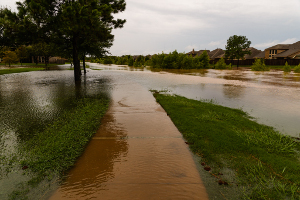Insurance industry in the USA: Property and casualty insurance
 Underwriting conditions have tightened for most non-life products as insurers are seeking to compensate for the increased frequency and severity of natural disasters, low interest rates, and economic and social inflation. While existing insurers have increased rates and deductibles, improved market conditions have also resulted in new insurers entering the market in 2021.
Underwriting conditions have tightened for most non-life products as insurers are seeking to compensate for the increased frequency and severity of natural disasters, low interest rates, and economic and social inflation. While existing insurers have increased rates and deductibles, improved market conditions have also resulted in new insurers entering the market in 2021.
The commercial lines alone accounted for 398 billion USD of premiums in 2021, that is 55% of the property and casualty premiums. Overall, the commercial insurance market has improved in 2021 with a combined ratio of 96.9%. This result is largely due to the high pricing imposed by the market.
With 251.2 billion USD, the motor class of business represents 35% of the non-life premiums. In 2021, the activity has returned to normal after the slowdown in 2020 due to COVID-19. This recovery has led to an increase in motor-related claims, resulting in a total net loss of 95.4 billion USD for the motor third party liability coverage and 73.8 billion USD for the motor property coverage.
The motor rates have progressed by 40%, over the period 2012 to 2021. This increase is due to increased claims frequency and external factors such as inflation and supply chain issues.
The homeowner’s insurance class of business faced continued financial challenges in 2021, resulting in a combined ratio of 103.8%. However, this is a slight improvement from the previous year's combined ratio of 107.4%. The increase in the frequency and severity of natural disasters in recent years has put pressure on the profitability of the homeowners' class, resulting in underwriting losses in recent years.
Despite the premium increases applied by some companies to counter the impact of natural catastrophes, inflation remains a major challenge for the homeowner’s insurance class. Increases in the cost of building materials, labor and fuel have put additional pressure on the homeowner’s insurance profitability. The collected premiums in this activity amounted to 119.8 billion USD in 2021, which represents 16% of the property premiums.
With 96.2 billion USD of premiums posted in 2021, workman's compensation insurance represented 6.2% of the total property and casualty premiums written in 2021. Despite the low average premiums, the workman's compensation class of business has remained profitable for eight consecutive years. In 2021, a slight decline in profitability was observed, with the combined ratio deteriorating by 0.9 points to 91.9%.
Read also | Insurance companies in the United States
Insurance industry in the USA: P&C insurance results
The technical result
Economic recovery is not synonymous with better results. Despite the recovery of certain classes of business such as the motor activity, the property and casualty insurance industry as a whole has posted a loss in underwriting results over the past two years.
In 2021, earned premiums have increased by 7.4%, from 646.01 billion USD to 693.66 billion USD. Meanwhile, the incurred losses increased by 12.8% and the management expenses by 5.3% to 189.48 billion USD.
 The underwriting result, which has been highly volatile over the last few years, has gone from a heavy loss of 22 459 million USD in 2017 to a large gain of 12 100 million USD in 2020, only to relapse with a large loss of 39 million USD in 2021.
The underwriting result, which has been highly volatile over the last few years, has gone from a heavy loss of 22 459 million USD in 2017 to a large gain of 12 100 million USD in 2020, only to relapse with a large loss of 39 million USD in 2021.
The combined ratio follows the same curve as the loss ratio, which has been improving since 2017. The 100% mark was reached in 2017 with a rate of 103.9%.
* As a reminder, the combined ratio is an indicator for measuring the technical profitability of an insurance company. A combined ratio of more than 100% means that the insurer no longer has enough premiums to meet its claims and management expenses.
Main technical highlights of the non life insurance market in the USA: 2017-2021
Figures in millions USD
| 2017 | 2018 | 2019 | 2020 | 2021 | |
|---|---|---|---|---|---|
| Earned premiums | 549 958 | 603 188 | 630 776 | 646 014 | 693 664 |
| Incurred losses | 353 954 | 366 258 | 378 582 | 383 308 | 432 474 |
| Management expenses * | 151 672 | 168 228 | 173 005 | 179 964 | 189 487 |
| Underwriting results | -22 459 | 2 907 | 8 373 | 12 100 | -39 |
| Loss ratio | 76.20% | 71.40% | 71.00% | 70.20% | 72.50% |
| Management expenses ratio | 27.00% | 27.10% | 26.90% | 27.30% | 26.30% |
| Combined ratio | 103.90% | 99.10% | 98.70% | 98.70% | 99.60% |
* Including overhead costs and commissions
Sources: NAIC data, Annual Report on the Insurance Industry
The net result
Figures in millions USD
| 2017 | 2018 | 2019 | 2020 | 2021 | |
|---|---|---|---|---|---|
Underwriting result | -22.459 | 2.907 | 8.373 | 12.1 | -0.039 |
Pre-tax result | 19.6 | 10.7 | 11 | 10.4 | 17.9 |
Federal tax | -0.8 | 7.2 | 8.5 | 8.7 | 9.1 |
Net result after tax | 40.6 | 60.8 | 63.1 | 60.7 | 63.4 |
Source: NAIC data
Main P&C insurance companies in the USA
The American non-life insurance market is highly saturated. In 2021, of the 3 730 active companies, the leading ten control 48.3% of the market, whereas the top 100 account for 87.5% of the non-life premiums. The rest of the market, that is 3 630 companies, share the remaining 12.5%.
State Farm is the leading U.S. property and casualty company with a market share of 8.9%. It is followed by Berkshire Hathaway and Progressive Corp. with 6.5% and 6.1% market share, respectively.
To discover | Top 10 non life insurance groups in the USA
Non-life premiums and claims per State: ranking according to 2021 premiums
With 96 billion USD of premiums, California represents the largest market in the United States. The Northern Mariana Islands followed by Louisiana show the highest loss ratio in 2021 with respective rates of 186.09% and 169.40%.
Figures in millions USD
| State | Written premiums | Loss ratio |
|---|---|---|
| California | 96 311 546 | 56.25% |
| Florida | 66 400 853 | 60.35% |
| Tennessee | 62 388 597 | 59.42% |
| Illinois | 30 484 708 | 57.82% |
| Pennsylvania | 28 340 342 | 58.31% |
| Ohio | 28 238 073 | 52.11% |
| Georgia | 26 514 329 | 63.23% |
| Michigan | 21 330 739 | 63.64% |
| North Carolina | 19 676 819 | 58.36% |
| New York | 19 604 704 | 61.65% |
| Massachusetts | 18 330 652 | 48.40% |
| Colorado | 16 368 169 | 63.11% |
| Virginia | 15 463 168 | 53.68% |
| Missouri | 14 262 648 | 58.12% |
| Arizona | 14 088 672 | 61.50% |
| Minnesota | 14 037 235 | 59.06% |
| West Virginia | 13 898 249 | 54.11% |
| Maryland | 13 781 070 | 53.74% |
| Indiana | 13 581 154 | 56.03% |
| Louisiana | 13 331 567 | 169.40% |
| South Carolina | 12 159 432 | 56.07% |
| Wisconsin | 11 964 642 | 54.13% |
| Alabama | 10 841 361 | 61.86% |
| Connecticut | 10 013 170 | 60.96% |
| New Mexico | 9 329 080 | 59.39% |
| Kentucky | 8 599 606 | 68.55% |
| Iowa | 8 054 991 | 61.68% |
| Kansas | 7 896 343 | 55.40% |
| Arkansas | 6 419 527 | 64.49% |
| Mississippi | 6 342 947 | 60.05% |
| Utah | 6 330 338 | 55.82% |
| Nebraska | 6 073 036 | 55.34% |
| Idaho | 3 849 228 | 62.21% |
| Delaware | 3 261 830 | 52.37% |
| New Hampshire | 3 187 815 | 45.17% |
| North Dakota | 3 185 179 | 89.04% |
| Washington | 3 121 523 | 70.47% |
| Montana | 3 072 567 | 64.73% |
| South Dakota | 3 049 310 | 65.25% |
| Hawaii | 2 891 484 | 47.52% |
| Rhode Island | 2 879 868 | 54.85% |
| Nevada | 2 834 333 | 58.61% |
| Maine | 2 771 319 | 48.05% |
| Porto Rico | 2 668 968 | 12.43% |
| Oregon | 2 637 001 | 59.94% |
| Oklahoma | 2 631 636 | 62.42% |
| District of Columbia | 2 328 414 | 46.32% |
| Alaska | 1 711 194 | 47.78% |
| Wyoming | 1 355 772 | 54.68% |
| Vermont | 1 329 047 | 45.11% |
| Guam | 316 325 | 50.13% |
| Virgin Islands | 176 034 | 27.32% |
| Texas | 175 810 | 79.01% |
| Northen Mariana Islands | 21 924 | 186.09% |
| New Jersey | 21 923 | 65.76% |
Source: NAIC data
